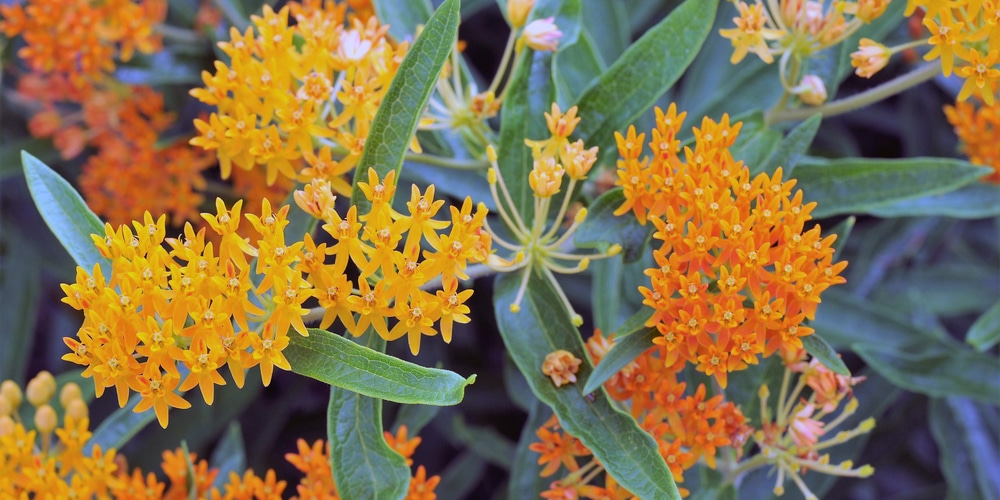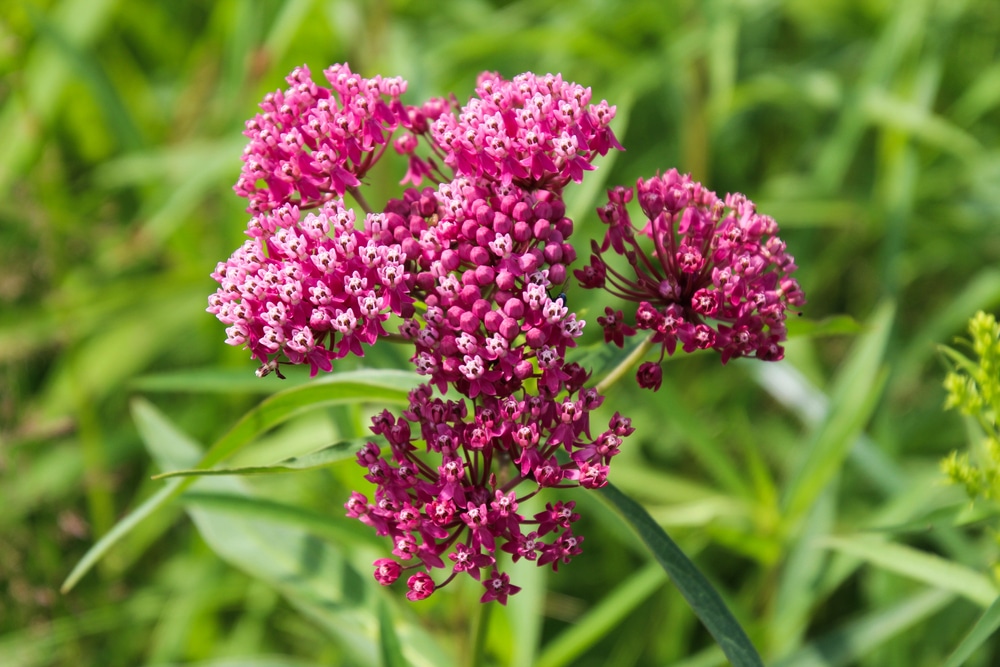Butterfly weed and milkweed are both beautiful plants that attract butterflies. They are also both critical plants for the survival of Monarch butterflies. However, there are some key differences between these two plants. Let’s take a look at some of the similarities and differences between butterfly weed vs milkweed.
One of the main similarities between butterfly weed and milkweed is that they are both part of the Asclepiadaceae family. This means that they share many of the same characteristics, including clusters of small flowers.
What is Butterfly Weed?
Butterfly weed has the botanical name Asclepias tuberosa and is part of the Asclepiadaceae family, also known as the milkweed family. It’s sometimes referred to as butterfly milkweed.
Butterfly weed is a perennial herb that grows about 1 to 2 feet tall. The plant takes a while to establish itself and doesn’t produce flowers in the first 2 or 3 years.
Butterfly weed has orange, red, or yellow flowers and long pointed leaves arranged in clusters. The flowers are rich in pollen and are great for attracting butterflies and other pollinators to your yard.
Butterfly weed is native to the United States, but it can also be found in Canada and Mexico. It grows best in dry, well-drained soil that’s slightly acidic to neutral and has a pH range between 6.0 and 7.0. These plants prefer full sun and grow best in USDA zone 3 to 9.
Butterfly weed is mildly toxic to humans and animals and should be avoided if you have young children or pets. The plants are also considered an invasive species as they have small seed pods that can be easily spread via the wind.
What is Milkweed?
Milkweed is a genus of plants that contains about 140 species that belong to the dogbane or Asclepiadaceae family. These plants can grow to be between 1 and 6 feet tall and have various colors of flowers. Most plants commonly have pink, purple, or white flowers, and their leaves are arranged alternately on the stem.
Some varieties of milkweed include common milkweed, narrowleaf milkweed and Rush milkweed. There is also giant milkweed.
Milkweed is native to North America, but it can also be found in Europe, Asia, Africa, and Australia. It grows best in moist, well-drained soil and prefers full sun to partial shade.
Butterfly Weed vs Milkweed: Similarities
Both butterfly weed and milkweed are beautiful plants that attract butterflies. They are both part of the Asclepiadaceae family and have similar flowers and leaves.
- Both plants are native to North America and are found growing in dry grassland areas
- They prefer full sun and well-drained soil
- Both common milkweed and butterfly weed bloom in the late summer and early fall
Butterfly Weed vs Milkweed: Differences
The main difference between butterfly weed and milkweed is that milkweed produces a milky sap from its stem, while butterfly weed has a clear colored sap.
Other key differences include the plant’s height and the flowers’ color. Common milkweed has purple flowers while butterfly weed flowers are orange.
- Butterfly weed grows in clumps while milkweed plant grow further apart.
- Butterfly weed has hairy stems
- Common milkweed is more prevalent than butterfly weed and is found growing across much of American, while butterfly weed is found on the east side of the Rocky mountains and surrounding areas.
- Common milkweed grows 5 to 6 feet tall while butterfly weed is more compact growing 1 to 3 feet.
Final thoughts
Both butterfly weed and milkweed are beautiful plants that attract butterflies and other pollinators to your yard. These plants are similar as they are part of the same botanical family.
The main difference between these two plants is their height, flower color, and ability to produce sap.


